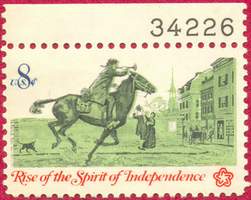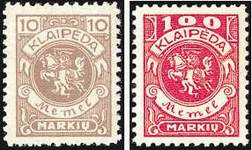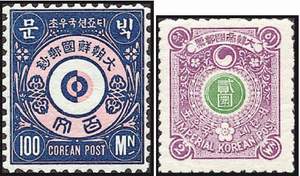Dictionary
KETSAL — since 1927, the monetary unit of Guatemala, equal to 100 centavos.
The key DATE is the date the printing of stamps, sometimes in order to control and account printed in one of the fields of branded sheet.
Key FIGURES ON the SHEETS — a variety of figures printed in the margins of stamp sheet. Depending on the design of printing machines designate the ordinal number of the printing sheet and the print date (to control), and sometimes the conditional number of the order. For example, such figures have postage stamps of the USSR in 1977, is dedicated to the XXII Olympic Games in Moscow, tourism Golden ring (No. 4706-4710, 4790-4795 and others). Ordinal position of printed sheet and printing date are found on many postage stamps of the USSR in recent years. Postage stamps with Control numbers on the leaves are special objects of the collections, mainly of exploratory nature.

The check digit on the leaf box postage stamps USA
KIAOCHAU (Sawsan) [Kiautschou] — leased to Germany in 1897, the territory of China. The German mail has worked since 1898. In the years 1898-1901 used stamps of Germany, as well as the brand of the German mail in China (1898-1901 years). Since 1901 the appeal of the brand the colonial type (yacht "Hohenzollern") with the value of the German currency. In 1905, the series reissued with face values in Chinese currency. In November 1914, the territory occupied by Japan, stamps taken out of circulation.

Postage stamp of Kiaochau
KIEV PROVISORY. In 1922 in Kiev on the savings stamps of Russia overprint made a new nominal value in rubles (7 500, 8 000 and 15000). Imprinting was carried out top-down and bottom-up. The Dnieper (near Kiev) made a private overprint "7 500". Burnt in the unknown.
KIGOMA — found on stamps of the Belgian Congo stamp — a stamp used by the Belgian field post office in 1916. The same applies to stamps karema, Kigali, Tabor, of Usumbura.
The KILLER (English — the killer) — stamp name of stamps of USA and great Britain of the last century, consisting of wide strips of different shapes. The stamp on the stamp ruled out any possibility of removing it (in order to reuse stamps). This figure is brand has become absolutely indistinguishable.
KILO GOODS (kilbarry goods) — see Wholesale cheap mix.
KINK — damage to the brand (and other block), which disrupted the fiber structure of the paper. The fracture usually cannot resolve, it is visible when looking at the marks against the light. Is caused by careless handling of marks or more in their production. Depending on the size and distinctness of the Fracture value of the brand decreases (see Mark's postquality).
KIP — since 1955 monetary unit of Laos, equal to 100 atam; 1976 "Kip of freedom" equal to 20 old bales.
KIRIBATI [Kiribati], Republic of Kiribati (1979 -) is a country on the Islands of Gilbert, Line, Phoenix, Ocean in the southwestern Pacific ocean. The former British colony of the Gilbert Islands. 12.07.1979 proclaimed independence that was marked by the issue of 2 commemorative stamps with the new name of the country. In 1979 released the first block.
KISHANGARH [Kishengarh] — the former feudal Principality in British India, which had its own postal service. Own stamps were issued in 1899. Inscriptions in English and Hindi. Since 1918 issued service stamps — overprint (in the language of the Darbar) on postage stamps abbreviations text "In the service of Prince Kishangarh". Production continued until 1947. In 1948, Kishangarh became part of Rajasthan.
KISHN AND SOCOTRA [Mahra State of Qishn and Socotra] — a former Sultanate to the East of Aden. Since 1967 in the people's Republic of southern Yemen (now southern Yemen). In March 1967, issued a series of standard models. All other editions recognized by the FIP undesirable.
KLAIPEDA RELEASES [Klaipeda, Memel, the Lithuanian SSR]. After the 1st world war, the klaipėda region was part of Germany came under French control. With 11.01.1923 became part of Lithuania. Until August 1920 used stamps of Germany. From August to October 1920 in the stamps of Germany overprinted (German) "Memel area". From July 1920 to January 1923 used stamps of France overprinted with the new denomination and the name of the territory. Released as a 3 series an airmail stamps. Lithuanian post has issued special stamps for the klaipėda territory from January, 1923, including a commemorative series in honor of the joining Lithuania.

Postage stamps Klaipeda
KLEIN FAKES — philatelic counterfeits of the name brands of the GDR and fantastic editions of stamps of the GDR. Manufactured in 1955, 1956, in West Berlin some V. Klein. Was used for propaganda and subversive activities against the GDR and also for the deception of collectors.
KLEINBOGEN — see Sheet small.
KOCHEGAROVA PROVISORY (Irkutsk province) — local issue of 1920, the revaluation of plying brands in the ratio 1:100, — manual paint black overprint of the new nominal value "4 R" the postage stamp Russia in 4 cents.
KOLODEEVA FILM — the name collodium impregnated with a solution of transparent paper used rarely when printing postage stamps. The design was applied by letterpress and the positive cliche to the back side of the paper, and over it a layer of glue. The drawing of the mark is visible through the transparent collodial film from the front side. Stamps are very sensitive to water, gasoline and others: the paint is easily washed off, and the paper after dissolution kollegievej film lost transparency. Kolodeeva film was seen as a means to combat counterfeiting of brands. Example print marks on Kollegievej film — official stamps of Prussia, 1868.
KOREA is a country in Eastern Asia on the Korean Peninsula. In 1897 the Kingdom of Joseon. Since 1905 under colonial rule of Japan. In 1945 liberated by the Soviet Army. By agreement between the USSR and the USA in Korea were installed, the time zone of responsibility of Soviet and American troops accepting the surrender of the Japanese army, with the dividing line at the 38th parallel. In may 1948 in South Korea was held separate elections, and in August of 1948 proclaimed "Republic of Korea". In the North 09.09.1948 created the Korean people's Democratic Republic.
First stamps of Korea issued in 1884. One of them (5 moon) was intended for internal, the other (10 moon) —for international correspondence. The stamps were issued until 1905. In 1902 issued a single commemorative stamp. And in 1905 entered into circulation stamps of Japan.

Postage stamps of Korea